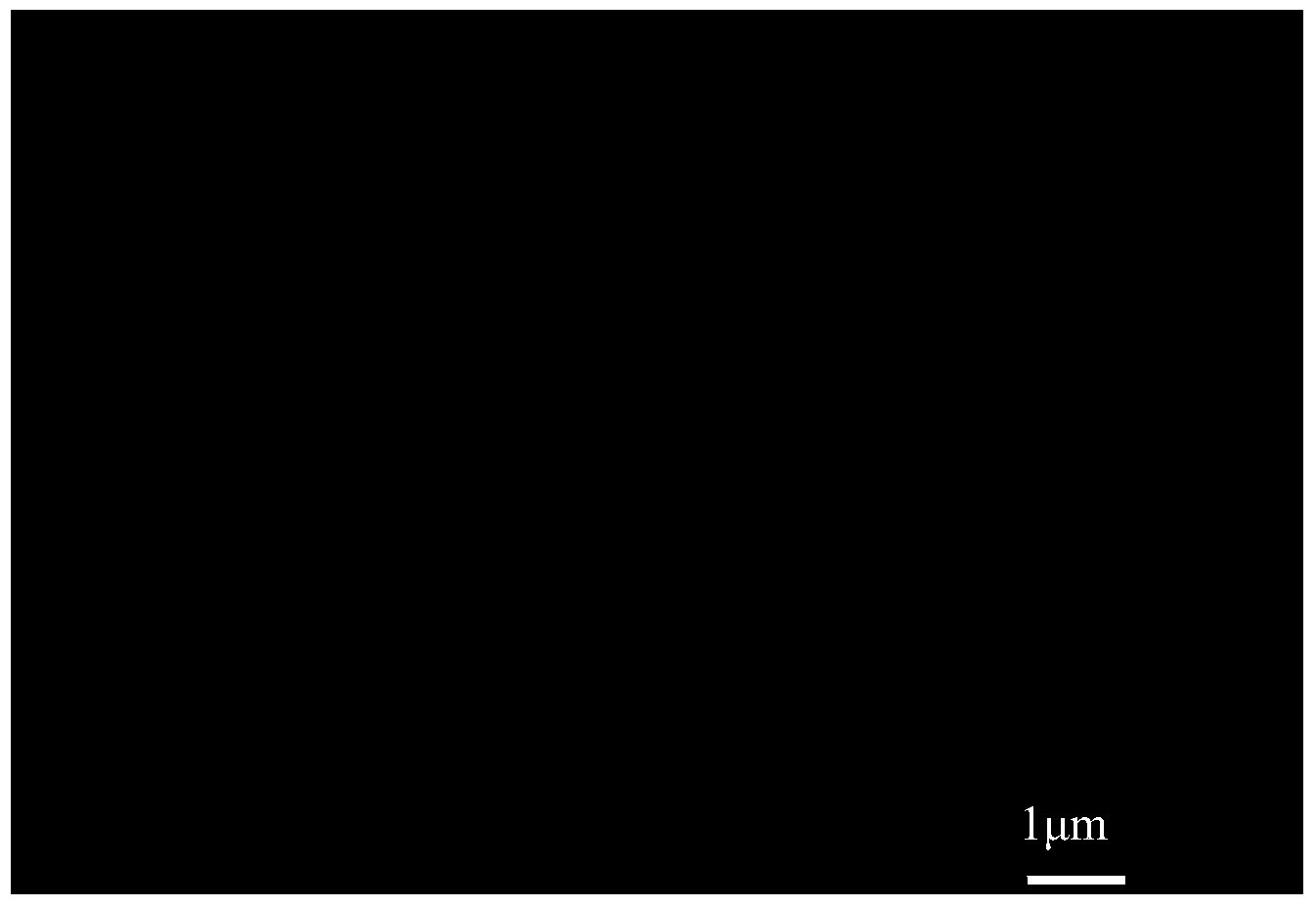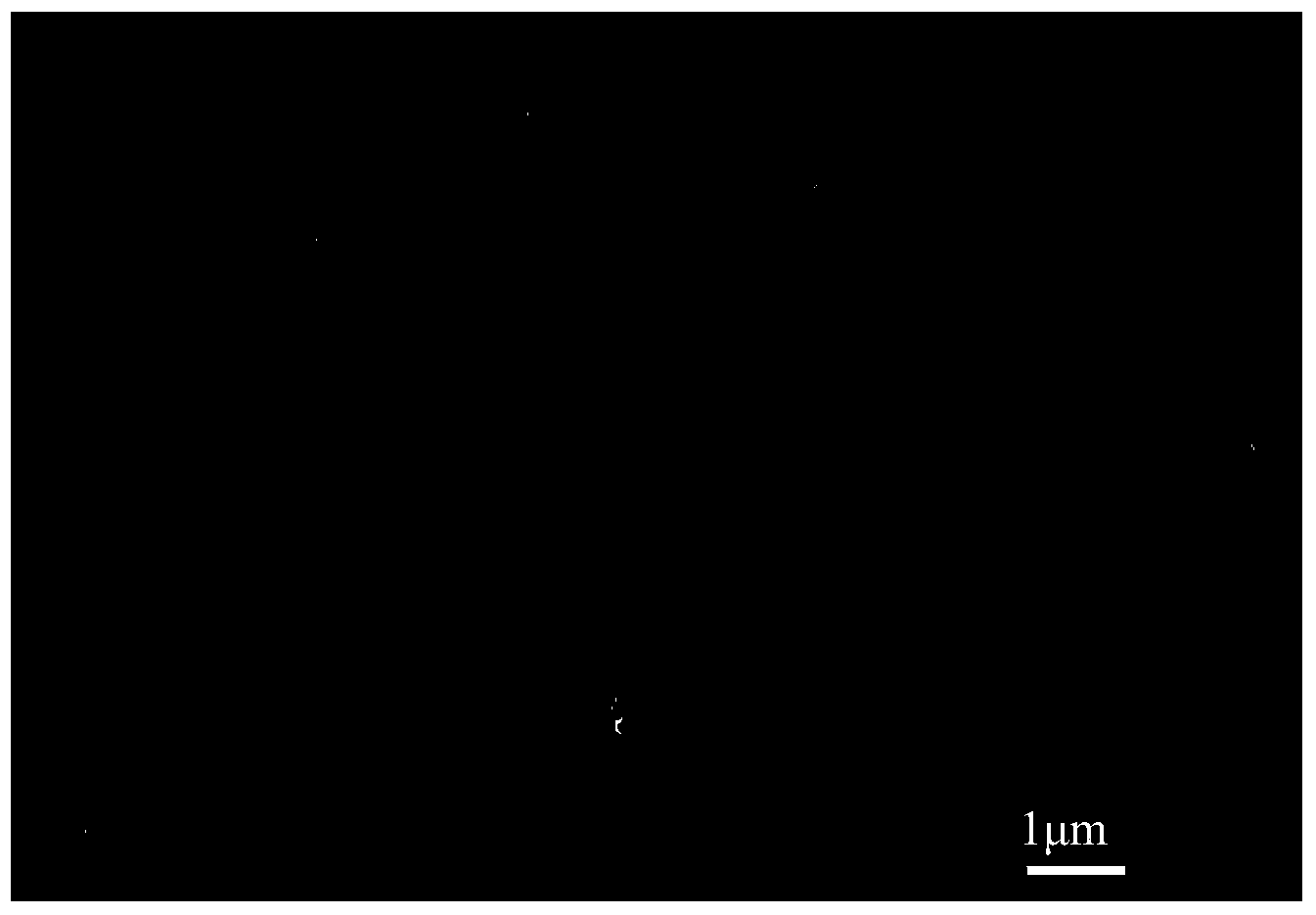Pollution-resistant polyamide composite membrane and preparation method thereof
A pollution-resistant, polyamide technology, applied in chemical instruments and methods, membrane technology, semi-permeable membrane separation, etc., can solve the problems of weak anti-microbial pollution, weak anti-inorganic and organic pollution, etc., and achieve high salt cut-off rate , easy to prepare and operate, high water flux effect
- Summary
- Abstract
- Description
- Claims
- Application Information
AI Technical Summary
Problems solved by technology
Method used
Image
Examples
Embodiment 1
[0035] Prepare the pollution-resistant polyamide composite membrane 1 of this embodiment according to the following steps:
[0036] 1) Preparation of inorganic nanoparticle composite hydrophilic polymer solution: Weigh 3g of PVA with a degree of polymerization of 1400 and a degree of alcoholysis of 99%, 10g of glutaraldehyde, 20g of hydrochloric acid in 966g of pure water, and heat to 95℃ , Stir until completely dissolved; Weigh 1g of nano silver particles with a particle size of 20nm and add them to the solution and stir until they are evenly mixed.
[0037] 2) Preparation of anti-pollution layer: form a polysulfone layer on the polysulfone support layer; then combine the polysulfone support layer formed with the polysulfone layer and the inorganic nanoparticles obtained in step 1) of this embodiment to compound hydrophilicity The polymer solution was contacted for 10 seconds to remove the excess solution, and a PVA layer containing nanoparticles was formed on the surface of the p...
Embodiment 2
[0040] Prepare the pollution-resistant polyamide composite membrane 2 of this embodiment according to the following steps:
[0041] 1) Preparation of inorganic nanoparticle composite hydrophilic polymer solution: Weigh 5g of PVA with a degree of polymerization of 900 and a degree of alcoholysis of 99%, 10g of glutaraldehyde, and 20g of hydrochloric acid in 964g of pure water and heat to 95℃ , Stir until completely dissolved; Weigh 1g of nano silver particles with a particle size of 20nm and add them to the solution and stir until they are evenly mixed.
[0042] 2) Preparation of anti-pollution layer: Preparation of anti-pollution layer: form a polysulfone layer on the polysulfone support layer; then combine the polysulfone support layer formed with the polysulfone layer with the inorganic material obtained in step 1) of this embodiment The nanoparticle composite hydrophilic polymer solution was contacted for 10s, the excess solution was removed, and a PVA layer containing nanoparti...
Embodiment 3
[0045] Prepare the pollution-resistant polyamide composite membrane 3 of this embodiment according to the following steps:
[0046] 1) Preparation of inorganic nanoparticle composite hydrophilic polymer solution: Weigh 10g of PVA with a degree of polymerization of 2400 and a degree of alcoholysis of 99%, 10g of glutaraldehyde, and 20g of hydrochloric acid in 959g of pure water, and heat to 95℃ , Stir until completely dissolved; Weigh 1g of nano silver oxide particles with a particle size of 20nm and add them to the solution and stir until they are evenly mixed.
[0047] 2) Preparation of anti-pollution layer: form a polysulfone layer on the polysulfone support layer; then combine the polysulfone support layer formed with the polysulfone layer and the inorganic nanoparticles obtained in step 1) of this embodiment to composite hydrophilic polymerization The material solution was contacted for 10s, the excess solution was removed, and a PVA layer containing nanoparticles was formed on...
PUM
| Property | Measurement | Unit |
|---|---|---|
| particle diameter | aaaaa | aaaaa |
| degree of polymerization | aaaaa | aaaaa |
| alcoholysis degree | aaaaa | aaaaa |
Abstract
Description
Claims
Application Information
 Login to View More
Login to View More - R&D
- Intellectual Property
- Life Sciences
- Materials
- Tech Scout
- Unparalleled Data Quality
- Higher Quality Content
- 60% Fewer Hallucinations
Browse by: Latest US Patents, China's latest patents, Technical Efficacy Thesaurus, Application Domain, Technology Topic, Popular Technical Reports.
© 2025 PatSnap. All rights reserved.Legal|Privacy policy|Modern Slavery Act Transparency Statement|Sitemap|About US| Contact US: help@patsnap.com



